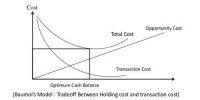Market Value Added (MVA) Method
Market value added can be calculated as the difference between the company’s market value and the amount of capital invested in the business. MVA measures the operational capabilities of a company’s management and represents the value of the company as a whole on the open market. It is the difference between the capital contributed to the company by bondholders and shareholders and the final market value of the product. The MVA formula does not account for any cash payments that the company may have paid out to shareholders. It also does not measure the opportunity costs relative to any alternative investments. A company’s MVA is an indication of its capacity to increase shareholder value over time. If it is negative, the firm might decide to change directions in favor of a more value-oriented approach.
MVA Example – The MVA calculation works best for companies that have objective valuations, such as those with stocks traded on public exchanges. However, the MVA method can also be useful for small, private companies that have documented the capital contributions of its owners. For instance, if the partners in a small restaurant have contributed $250,000 into the business since its opening, and the restaurant is currently valued at $600,000, the restaurant’s MVA is $350,000.
The formula used to find market value added is:
Market Value Added = Market Value – Capital Invested
Increasing MVA or increasing shareholder wealth is the primary goal of any business and the reason for its existence.















